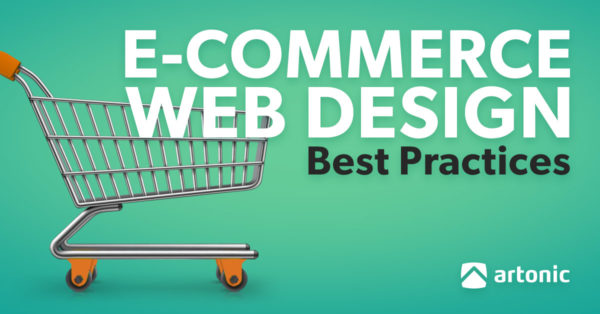At the start of every website design project, we ask our clients to define their target audience. Predictably, the answers we get vary.
Some clients leave this entire section blank – perhaps because it’s overwhelming or they just don’t know. Others answer with enormous ranges based on something other than facts and data.
And then there are the few who understand what a target audience is, and specifically, who their target audience is. These clients answer with realistic age ranges, income levels, and locations based on actual data and facts. These clients get it.
Do You Get It?
Don’t worry if you don’t – that’s what this article is for: To help you gain new insight into your target audience. This insight will allow you to understand those groups of people who want and need your services and products, and those who are most likely to buy.
Once you have this information, you can delve deeper into who these people are, and what they really want from your organization. Doing this can impact – even change – the way you do business.
Ready to start? Let’s go!
Unraveling the Mystery: What is a Target Audience?
First things first, a target audience is made up of groups of people (sometimes called personas) who are most likely to use your products and services. It is the group of people who find value in what you have to offer, those who want or need what you’ve got. It’s the people who “get it” – who understand the value of your organization and enjoy what you have to offer.
It’s also important to understand what a target audience is not, because that can help you better define who your target audience is.
It is not “everyone.” Even McDonalds does not target “everyone.” It does not include all age groups, economic levels, and locations. It is not a blanket term for “people” or an “I wish” list; it’s specific information about real groups of individuals.
This is a common mistake; many organizations think their product can be used by all people, or their services are needed by everybody. But that’s just not the case. In fact, this kind of thinking can really cripple your marketing efforts – by casting the net too wide, you’re unlikely to catch much of anything.

Who is My Target Audience?
Now it’s time to figure out who your target audience is. (Don’t worry, it’s easier than you think!)
Let’s start by reviewing your organizational goals along with your services and products.
Write it down: What’s important to you value-wise? Why is your organization here? What’s your mission statement? What do you care about? Write it all down, and be as specific as possible. If you haven’t figured this stuff out yet, now is the time! No organization can expect to be a major player in any industry without a reason or purpose for existing.
Next, let’s figure out how you fit in with the rest of society.
Ask Yourself: What problems do my products or services solve or alleviate? Who is the best fit for my organization? Are there groups of people who benefit more than other groups? Individuals who share the same values as I do?
You’ve likely created a pretty good outline by now, not only of what you have to offer, but who will most benefit.
The Gritty Details
Take your brainstorming to another level with real data and facts. There are many valuable resources available to help you further define your target audience such as demographic data, market research reports, and more.
A great resource is http://www.city-data.com/. Here you’ll find maps with detailed demographic information for key neighborhoods, including crime rates and weather patterns.
Another interesting website is the United States Census Bureau, found at http://www.census.gov/.
For marketing research reports with stats, key findings, and more, check out https://www.forrester.com/home/.
Know of more? Please list them in the comments section!
Let’s Get Closer
To really get inside the head of your target audience, do a little snooping. Spy on your key demographic through social media, forums, even Google! Not only will this reveal a wealth of real-world information, it’s also quite fun!
To do this, go to Google and type into the search box, “Top Plant Managers in Michigan.” A results list filled with actual profiles will appear. Check them out. Browse. Search. Dig deeper. Take notes, get some screen shots, and learn, learn, learn.
Visit Twitter and search for terms like “Manufacturing,” “Plant Managers,” and “Michigan.” Check out your results, refine your searches, and keep going. You may uncover very interesting insights!
The more you get to know your target audience, the better you’ll be at sniffing out the nitty gritty details about what makes them tick. After reading twenty profiles on LinkedIn, scouring all manufacturing forums you can find, and searching for relevant terms, you’ll gain a level of intimacy with your target group that you did not know existed!
Nice to Meet You, I’m Your Target Audience
With this deep and detailed knowledge, draw up profiles of the different groups that make up your target audience (remember, we call these personas). Organize individuals by key demographics to better target them.
Is your target audience split up by different income levels? Or genders? Perhaps the age demographic varies depending on the product or service you offer. Whatever the case, filter these individuals into groups that make up the whole of your target audience.
Now Get Out There and Solve Some Problems
What’s next? It’s time to get out there and do some good in the world! Find the people who make up your target audience and help them! How can you make their lives easier, their businesses more efficient, their relationships more satisfying? How does your organization fit into their daily lives?
What does this look like in the real world? It may include writing a blog that answers common questions (i.e. What is a Target Audience?) or a video that gives an overview of your organization. Is your audience on SlideShare? Create a PowerPoint presentation that addresses common concerns or outlines the ways your organization benefits others. Once you begin, you’ll realize how many opportunities you have to communicate with your audience.
Connecting with your customers is key to the success of your organization. If you take time to understand their challenges, complaints, and hardships, you can better solve those items and be a valuable resource in your industry.
In this way you’ll position yourself as an organization that is customer-centered and helpful. You’ll find yourself innovating more, adapting better to change, and actually making a difference in people’s lives. And isn’t that why you’re doing all this in the first place?
Web Design Best Practices

How do you create a website that entices your customers to buy the things you sell? And what kind of marketing strategy is best? These questions are something we answer for clients all the time!
Discover what it takes to build a success e-commerce website online with our whitepaper: E-commerce Web Design Best Practices.
Say Hello!
Give Artonic a call or e-mail us if you’re interested in website design, development, or marketing.
Michigan, USA


